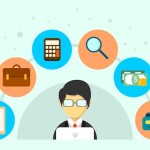- Table of Contents
- Back to the Basics: What Are KPIs?
- 15 Most Important Financial KPIs (With Their Formulas)
- 1- Revenue Growth Rate
- 2- Profit Margin
- 3- Return on Investment (ROI)
- 4- Operating Cash Flow Ratio
- 5- Current Ratio
- 6- Debt-to-Equity Ratio
- 7- Gross Margin
- 8- Accounts Receivable Turnover
- 9- Inventory Turnover
- 10- Working Capital
- 11- Quick Ratio
- 12- Churn Rate
- 13- Customer Lifetime Value (CLV)
- 14- Return on Assets (ROA)
- 15- Earnings Before Interest and Taxes (EBIT) Margin
- What Are the Benefits of Having Financial KPIs?
- Clarity and Focus
- Measurement and Evaluation
- Early Warning System
- Goal Setting and Motivation
- Enhanced Communication
- Resource Allocation
- Determining the Right KPIs for Your Business
- Business Objectives
- Relevance and Alignment
- Measurability and Availability of Data
- Actionable Insights
- Benchmarking and Industry Standards
- Adaptability and Evolution
- Balanced Approach
- Management Buy-In
- How to Gauge Financial Performance through KPIs
- Context Matters
- Trends and Patterns
- Comparative Analysis
- Cause and Effect
- Iterative Analysis
- How AI is Transforming Financial KPIs
- In Conclusion
Imagine yourself at the helm of a ship, navigating through stormy seas. In the business world, Key Performance Indicators (KPIs) serve as guiding stars, illuminating the path to success. Specifically, in the realm of financial performance, KPIs play a pivotal role in steering companies toward their objectives. In this comprehensive guide, we will delve deep into the world of financial KPIs, exploring their significance, understanding how to select the right ones, and unravelling how they effectively gauge financial performance.
Back to the Basics: What Are KPIs?
Key Performance Indicators, or KPIs, are quantifiable metrics that organisations employ to measure their progress towards achieving specific business objectives. In the context of financial performance, KPIs act as a compass, providing valuable insights into how well a company is faring in terms of its financial goals.
15 Most Important Financial KPIs (With Their Formulas)
1- Revenue Growth Rate
This KPI measures the percentage increase in revenue from one period to another, indicating the company's ability to generate more sales over time. The formula is [(Current Period Revenue - Previous Period Revenue) / Previous Period Revenue] * 100. A higher growth rate suggests business expansion and market demand.
2- Profit Margin
Profit margin assesses the efficiency of a company's cost management and pricing strategy. It's the ratio of net profit to total revenue, expressed as a percentage. The formula is (Net Profit / Total Revenue) * 100. A healthy profit margin signifies effective control over expenses and sustainable profitability.
3- Return on Investment (ROI)
ROI evaluates the return generated from an investment relative to its initial cost. The formula is [(Net Profit - Initial Investment) / Initial Investment] * 100. A positive ROI indicates that the investment has yielded profits, while a negative ROI suggests losses.
4- Operating Cash Flow Ratio
This ratio demonstrates a company's ability to meet its short-term liabilities with cash generated from its core operations. The formula is Operating Cash Flow / Current Liabilities. A ratio greater than 1 signifies a comfortable liquidity position.
5- Current Ratio
The current ratio measures a company's short-term liquidity by comparing current assets to current liabilities. The formula is Current Assets / Current Liabilities. A ratio above 1 indicates the company has enough assets to cover its short-term debts.
6- Debt-to-Equity Ratio
This ratio showcases the proportion of debt used to finance a company's assets in comparison to shareholders' equity. The formula is Total Debt / Shareholders' Equity. A higher ratio might indicate higher financial risk.
7- Gross Margin
Gross margin calculates the percentage of revenue that exceeds the cost of goods sold. The formula is [(Total Revenue - Cost of Goods Sold) / Total Revenue] * 100. A higher gross margin implies the company can cover operating expenses and generate profit more effectively.
8- Accounts Receivable Turnover
This KPI evaluates how efficiently a company collects payments from customers. The formula is Net Credit Sales / Average Accounts Receivable. A higher turnover indicates efficient credit management.
9- Inventory Turnover
Inventory turnover measures the number of times inventory is sold and replaced within a specific period. The formula is Cost of Goods Sold / Average Inventory. A high turnover indicates effective inventory management.
10- Working Capital
Working capital represents the funds available to cover day-to-day operations. It's calculated as Current Assets - Current Liabilities. Positive working capital ensures operational continuity.
11- Quick Ratio
Also known as the acid-test ratio, it assesses a company's immediate liquidity by excluding inventory from current assets. The formula is (Current Assets - Inventory) / Current Liabilities. A ratio above 1 suggests strong short-term liquidity.
12- Churn Rate
The churn rate quantifies the percentage of customers lost over a specific period. The formula is (Number of Customers at Start - Number of Customers at End) / Number of Customers at Start. A high churn rate might indicate dissatisfaction or competitive pressures.
13- Customer Lifetime Value (CLV)
CLV estimates the net value a customer brings throughout their engagement with the company. The formula is (Average Revenue per Customer per Year * Average Customer Lifespan) - Customer Acquisition Cost. A higher CLV signifies stronger customer relationships.
14- Return on Assets (ROA)
ROA gauges a company's efficiency in utilising its assets to generate profits. The formula is Net Income / Total Assets. A higher ROA implies effective asset management.
15- Earnings Before Interest and Taxes (EBIT) Margin
EBIT margin measures operating profitability without accounting for interest and taxes. The formula is (EBIT / Total Revenue) * 100. A higher EBIT margin suggests better operational efficiency.
These financial KPIs form the foundation of a comprehensive financial assessment. Each KPI sheds light on a specific aspect of a company's financial health, guiding decisions and strategies that can drive success in today's competitive business landscape.
What Are the Benefits of Having Financial KPIs?
In the intricate landscape of modern business, where data reigns supreme, the role of Key Performance Indicators (KPIs) in shaping financial success cannot be overstated. Beyond mere numbers and charts, KPIs act as dynamic tools that provide a multitude of benefits, illuminating the path to informed decision-making and strategic excellence.
Clarity and Focus
Imagine embarking on a journey without a destination in mind. Businesses without well-defined financial KPIs often find themselves in a similar situation. KPIs act as beacons of clarity, outlining precise financial objectives. They offer a clear vision of what the company aims to achieve, ensuring that efforts and resources are aligned toward common goals. This clarity minimises the risk of aimless pursuits and fosters a shared sense of purpose across the organisation.
Measurement and Evaluation
In the realm of financial management, intuition isn't enough to steer the ship. KPIs provide a quantifiable framework for measuring progress. They transform abstract goals into tangible metrics that can be tracked, analysed, and compared over time. This quantitative approach eliminates ambiguity and subjectivity, enabling leaders to make well-informed decisions based on concrete data. Whether it's monitoring revenue growth, assessing profitability, or evaluating return on investments, KPIs empower businesses to evaluate their performance objectively.
Early Warning System
In a dynamic business environment, issues can arise unexpectedly. Financial KPIs serve as an early warning system that signals potential challenges well before they escalate. A sudden decline in profitability, for instance, might indicate operational inefficiencies or market shifts. By continuously monitoring KPIs, organisations can identify these red flags early on, enabling them to take proactive measures to address issues and mitigate risks.
Goal Setting and Motivation
Human nature thrives on accomplishments. KPIs provide tangible targets that individuals and teams can strive to achieve. Meeting or exceeding these targets offers a sense of achievement and motivates employees to contribute their best efforts. The gamification aspect of KPIs transforms the pursuit of financial excellence into a dynamic and engaging journey, fostering a culture of continuous improvement and innovation.
Enhanced Communication
In the intricate web of modern businesses, effective communication is pivotal. KPIs serve as a universal language that transcends departmental boundaries. They present complex financial information in a digestible format, making it easier for stakeholders with varying backgrounds to grasp and discuss. KPIs facilitate transparent communication by presenting a clear and consistent picture of financial performance, fostering a sense of alignment and collaboration.
Resource Allocation
Efficient resource allocation is the cornerstone of financial success. KPIs act as guiding lights in this process by highlighting areas that require attention. For instance, if a company's debt-to-equity ratio is steadily increasing, it could indicate excessive reliance on borrowed funds. Armed with this insight, management can make informed decisions, such as focusing on reducing debt or optimising equity financing. KPIs guide resource distribution, ensuring that capital, time, and efforts are channelled into areas that maximise returns.
Determining the Right KPIs for Your Business
Selecting the right Key Performance Indicators (KPIs) is akin to tailoring a suit – one size doesn't fit all. Your business, like the unique individual it is, requires KPIs that align with its distinctive objectives and intricacies. Here's a comprehensive guide on how to meticulously handpick the KPIs that will steer your ship toward financial success:
Business Objectives
The foundation of KPI selection lies in your business objectives. What are you striving to achieve? Is it revenue growth, improved profitability, enhanced customer satisfaction, or efficient resource utilisation? Your KPIs should directly mirror these goals. If you're aiming for global expansion, KPIs related to international market penetration and revenue diversification might be relevant.
Relevance and Alignment
It's tempting to collect a plethora of KPIs, but relevance trumps quantity. Each KPI should offer a direct and meaningful connection to your business goals. For instance, tracking social media engagement might be crucial for an e-commerce company, but less so for a heavy machinery manufacturer. Be selective and choose KPIs that truly move the needle.
Measurability and Availability of Data
KPIs are rooted in data, and the accuracy of these metrics hinges on the availability of reliable information. Ensure that the data required for your chosen KPIs can be consistently measured and collected. If you're considering a KPI related to customer satisfaction, make sure you have a robust survey or feedback mechanism in place.
Actionable Insights
KPIs aren't just about numbers; they're about insights that prompt action. The right KPIs should provide actionable information that guides decision-making. If your KPIs indicate a sudden decline in lead conversion rates, it prompts you to investigate potential issues in your sales process and take corrective measures.
Benchmarking and Industry Standards
Contextualising your KPIs is crucial. Industrybenchmarks provide a yardstick against which you can measure your performance. Research and identify typical ranges for the KPIs that matter to your business. If your customer churn rate is higher than industry averages, it signals the need for improvement in customer retention strategies.
Adaptability and Evolution
Businesses aren't static; they evolve. Your chosen KPIs should be flexible enough to accommodate changes. As your business expands into new markets or introduces new products, your KPIs may need to shift. Regularly evaluate the relevance of your KPIs in the context of your changing business landscape.
Balanced Approach
A well-rounded KPI selection considers various aspects of your business. Balanceleading indicators(predictive metrics) withlagging indicators (historical metrics). While lagging indicators show the impact of your past actions, leading indicators offer insights into your future trajectory. A balanced mix offers a comprehensive understanding of your financial health.
Management Buy-In
Involving key stakeholders in the KPI selection process fosters ownership and commitment. Collaborative discussions with department heads, managers, and executives ensure that the chosen KPIs resonate across the organisation. Their insights can also highlight blind spots and lead to more holistic KPI choices.
How to Gauge Financial Performance through KPIs
In the ever-evolving landscape of business, the ability to decipher the intricate dance of financial numbers is a crucial skill. Key Performance Indicators (KPIs) serve as your compass, helping you navigate through the vast sea of financial data to truly understand how your organisation is performing. But it's not just about glancing at numbers; it's about interpreting the story they tell. Here's how to master the art of gauging financial performance through KPIs:
Context Matters
Numbers, on their own, can be deceiving. Contextual understanding is the key to unlocking the true message behind KPIs. A high revenue growth rate might seem impressive, but if it's driven by unsustainable price reductions, it could harm profitability in the long run. Understanding the underlying factors, market trends, and industry benchmarks helps you see beyond the surface and make informed interpretations.
Trends and Patterns
Static numbers are snapshots; trends reveal the movie. Regularly monitoring KPIs over time unveils patterns that might otherwise remain hidden. Is your profit margin consistently growing, plateauing, or declining? Trends expose areas of strength and vulnerabilities, allowing you to anticipate challenges and capitalise on opportunities. Is there a sudden spike in inventory turnover? This might suggest increased demand or improved supply chain management.
Comparative Analysis
A solitary number doesn't provide much insight, but when placed in context, it becomes a treasure trove of information. Benchmarking against historical data, industry peers, or even your own goals provides a yardstick for measuring success. If your current ratio is 1.5 and the industry average is 2, you can delve deeper into why this gap exists. Comparative analysis aids in identifying areas where you're excelling and where improvement is needed.
Cause and Effect
KPIs are interconnected, much like pieces of a puzzle. When one KPI changes, it can trigger a chain reaction that impacts others. For instance, if the churn rate suddenly spikes, it might lead you to investigate factors causing customer dissatisfaction. This, in turn, could affect customer lifetime value, revenue growth, and even profitability. Connecting the dots between different KPIs helps you pinpoint the root causes of changes and make targeted adjustments.
Iterative Analysis
Interpreting KPIs isn't a one-time affair; it's an ongoing process of analysis and adjustment. As your business landscape evolves, so must your understanding of your KPIs. Regularly revisiting and re-evaluating your interpretations in light of new information keeps your insights relevant and accurate. As you gain deeper insights into your business dynamics, you'll refine your ability to read between the lines of your KPIs.
Table 1: Comparison of How to Gauge Financial Performance through KPIs
Aspect of Gauging | Description | Key Considerations |
Contextual Understanding | Numbers need context for interpretation. | Assess impact of external factors on KPIs. |
Predictive Analytics | AI enhances forecasting accuracy. | Leverage machine learning for future performance trends. |
ESG Integration | Beyond finance, includes social, environmental impact. | Reflects commitment to sustainability and ethical governance. |
Comparative Analysis | Benchmarking against industry peers or goals. | Provides context for measuring success and identifying areas for improvement. |
Human-AI Synergy | Human intuition complements AI capabilities. | Combine analytical precision with contextual understanding for nuanced insights. |
How AI is Transforming Financial KPIs
In the age of digital transformation, businesses are increasingly relying on cutting-edge technologies to enhance their operations, and the realm of Key Performance Indicators (KPIs) is no exception. Artificial Intelligence (AI) has emerged as a game-changer, revolutionising the way financial KPIs are analysed and interpreted. Advanced algorithms and machine learning capabilities are now being employed to sift through vast amounts of financial data, providing deeper insights and uncovering patterns that might escape traditional analysis.
AI-powered predictive analytics, for instance, takes financial forecasting to a whole new level. By considering historical data, market trends, and a multitude of other factors, these systems can forecast future financial performance with remarkable accuracy. This not only aids in proactive decision-making but also serves as an invaluable early warning system, alerting businesses to potential challenges and opportunities well before they materialise.
Moreover, machine learning algorithms can dynamically adapt to changing business landscapes. As a company evolves, the AI system learns and refines its understanding of relevant KPIs, ensuring that the metrics used for assessment remain aligned with the shifting goals and objectives. This adaptability is particularly crucial in today's fast-paced and dynamic business environment.
The integration of AI doesn't replace human interpretation but complements it. While AI algorithms excel at processing vast datasets and identifying correlations, human intuition and contextual understanding remain vital in interpreting the nuances of financial performance. The synergy of human expertise and AI capabilities creates a powerful combination, allowing businesses to navigate the seas of financial data with greater precision and agility.
In Conclusion
Financial KPIs are not mere numbers on a spreadsheet; they are the heartbeat of your business, pulsating with insights that guide your every move. As you navigate the intricate terrain of financial performance, remember that the real magic lies in the art of interpretation. KPIs offer a symphony of data, and your role is that of a conductor, harmonising the notes to create a masterpiece of strategic decisions. By understanding the context, deciphering trends, benchmarking, identifying causality, and embracing a holistic perspective, you'll wield the power to transform data into action.
In the grand tapestry of business, KPIs are the threads that weave success stories. They empower you to transcend the realm of assumptions, facilitating data-driven decision-making that fuels growth and resilience. From the boardroom to the frontlines, KPIs offer a universal language that aligns diverse teams toward a common vision. So, as you embark on your journey toward financial excellence, remember that KPIs are not just metrics – they are your allies, your compass, and your key to unlocking the door to prosperity. Embrace them, master them, and let them illuminate your path to a future of strategic brilliance.
























